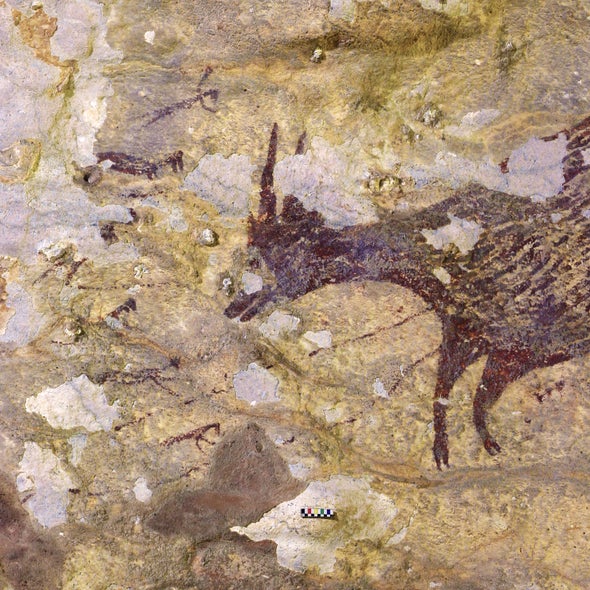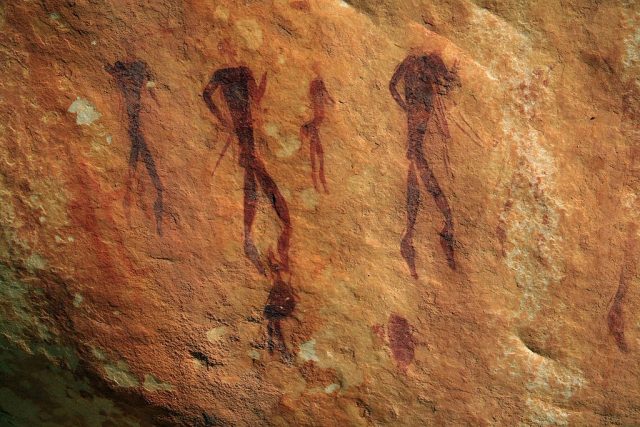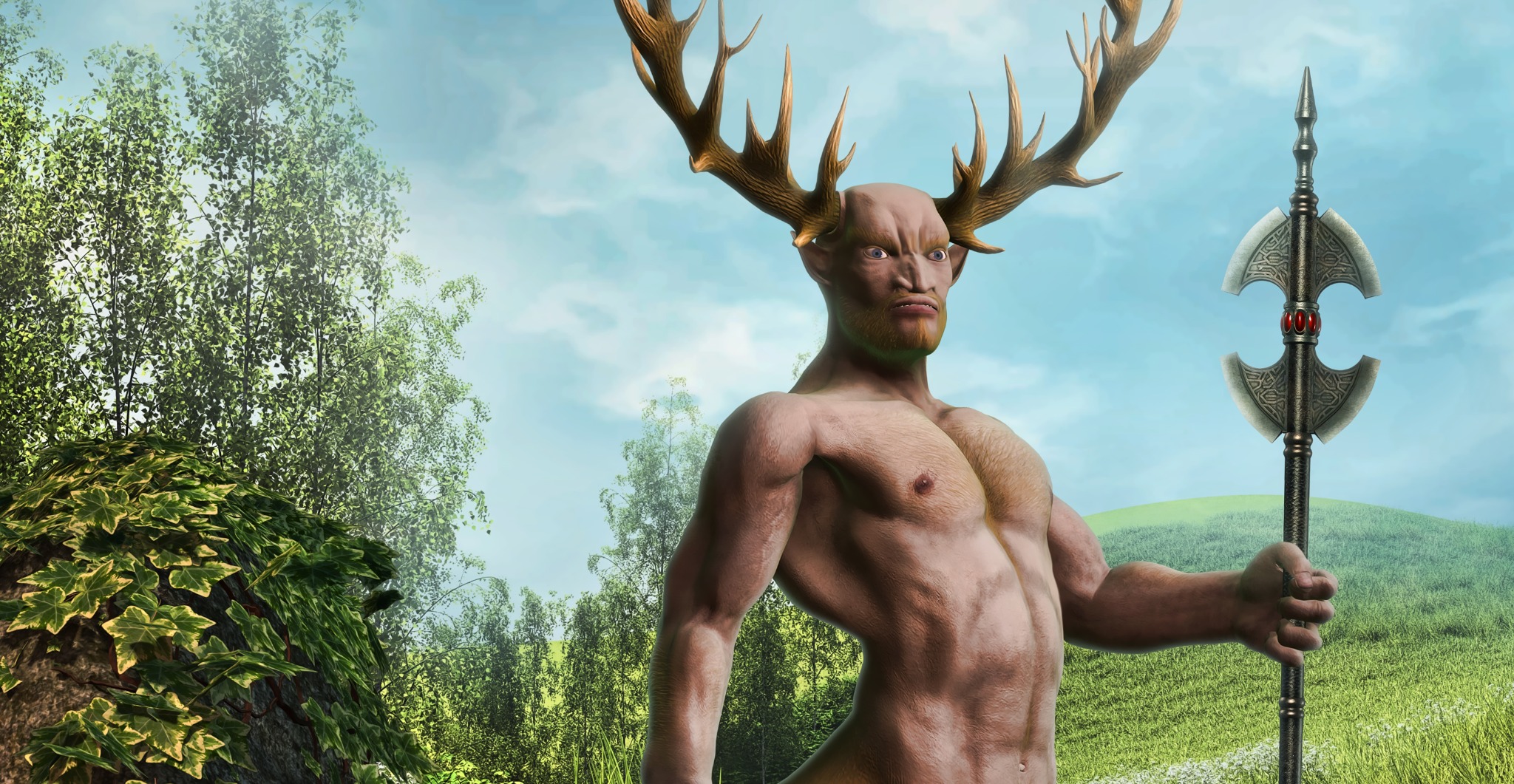An incredible and mysterious example of cave art found in Indonesia is causing a major stir. We are the only species that draws, paints, writes and follows other artistic impulses, of course, and the question of why we do so has preoccupied experts for centuries.
When researchers found examples of figurative art on Sulawesi, an island in Indonesia, researchers were excited and baffled firstly by the representations depicted in the art, and the age. Researchers from Australia discovered cave paintings of six small hunters, spears in hand, facing off with a massive buffalo.
After testing the substance with which the drawings were made, researchers concluded that they were done almost 45,000 years ago, which predates any similar drawings found in Europe and is now believed to be the oldest figurative art known to humans.
As well the painting appears to show several strange, even mythical humanoid figures hunting real-life animals. Which means it would also be the oldest depiction of storytelling and supernatural thinking known in the world today. The hunters appear to be human but have mysterious animal traits—one possesses a tail, for example, and another has a beak. Such beings are called therianthropes, part-human part-animal creatures, and are considered to be indicators of spiritual and mythological thinking.

Adam Brumm of Griffith University in Australia, believes they are of great historical significance, particularly in understanding how and why man developed an urge to create.
“Apart from the art,” he told news website scientificamerican, “these sites otherwise show no evidence of human habitation, and we assume ancient people used them (the caves) just for image making.” That implies that these people went to the caves specifically to create art, in Brumm’s view, to tell a story, however crudely, and see that it was preserved.

He added that the team believes these are the “oldest pictorial record of storytelling and supernatural thinking in the world.” The researchers found the images while working on the island in 2017.
And while the discovery was significant, Brumm acknowledged that, in some respects, why the cave drawings are there is still a mystery. “Why, we don’t know,” he agreed in the interview with scientificamerican. “But perhaps creating cave art in such an inaccessible, (limited) location high above the ground surface had some sort of deeper cultural and symbolic significance.”
The find itself is of huge scientific and historical importance, but Brumm and his colleagues admit the drawings shed little light on the evolution of artistic expression. “This cave art we have dated doesn’t provide any direct insight into this interesting question — sadly!” he said.
If the drawings don’t reveal much about the rise of artistic impulse and man’s need to express himself through storytelling and art, they do at least offer insight into who was drawing and when. Brumm explained, “Given the sophisticated nature of the imagery, our working hypothesis is that modern humans — people with essentially the same ‘cognitive architecture’ as us — made this cave art.”
Some folks in scientific circles are unsure of the age of these Indonesian cave paintings, including Paul Pettitt, an archaeologist with the University of Durham in England.
He suspects they are not as old as Brumm’s team believes, and while Pettitt was not involved in the project in Indonesia, he is a recognized expert on the subject of ancient art. He told scientificamerican, “Some of them (the figures in the drawings) are vague and certainly open to question.”
Related Article: Earliest Known Painting of an Animal Found in a Remote Cave
More research is being conducted on the island, and other sites are being explored. Drawings found elsewhere have yet to be dated, but they will no doubt offer more information about who was drawing, when they were doing it, and perhaps even why.
For the moment, however, why man developed a compulsion to make art, tell a story and leave a record of some kind, however, crudely, remains a mystery that archaeologists, scientists, and historians have yet to completely unfold and explain.
